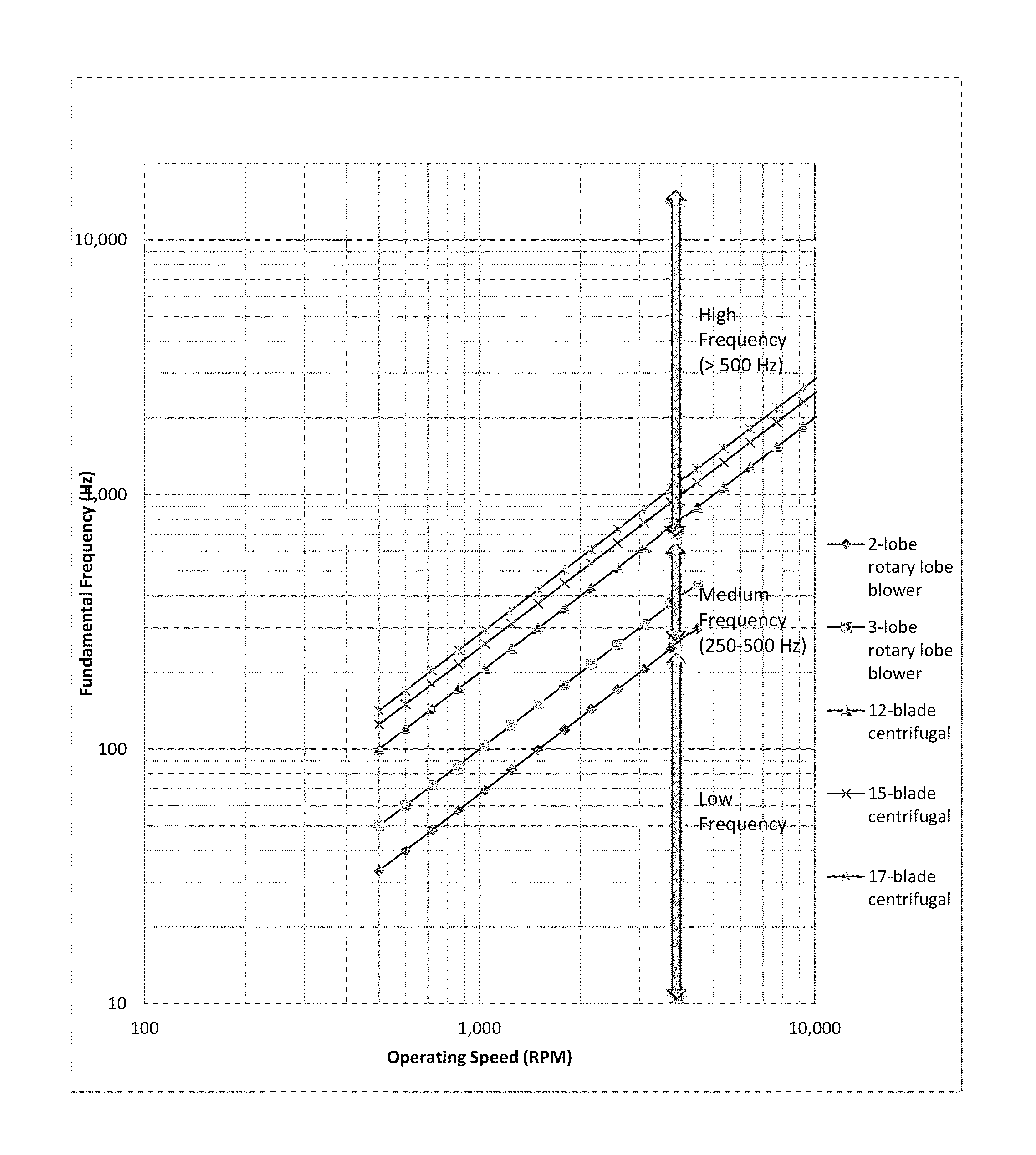Cyclic adsorption process using pulsation controlled compressors
a compressor and pulsation control technology, applied in the direction of separation processes, dispersed particle separation, chemistry apparatuses and processes, etc., can solve the problems of local residents being subjected to nuisance levels of ambient noise, associating levels of radiated noise, and noise generation, so as to eliminate undesirable frequency pulsations, and less readily adsorbable components
- Summary
- Abstract
- Description
- Claims
- Application Information
AI Technical Summary
Benefits of technology
Problems solved by technology
Method used
Image
Examples
Embodiment Construction
[0020]The present invention is a cyclic adsorption process using compressors which operates under predetermined conditions that eliminates certain frequency pulsations generated in the process under normal operation. The compressors in the plant are operated at predetermined speeds and under conditions that do not generate low, and preferably, low and medium range frequency pulsations. A typical cyclic adsorption process described herein is one that utilizes operation of a compressor, preferably a centrifugal compressor, to meet the required pressurization and depressurization steps in the process. Acceleration generally occurs during the steps of pressurization and evacuation. Deceleration generally occurs when rapid changes in vessel pressure, such as during falling pressure equalization, results in decreasing pressure ratios. For example, in single bed oxygen VPSA systems, deceleration will occur in the following process steps: oxygen recovery depressurization, oxygen recovery ov...
PUM
 Login to View More
Login to View More Abstract
Description
Claims
Application Information
 Login to View More
Login to View More - R&D
- Intellectual Property
- Life Sciences
- Materials
- Tech Scout
- Unparalleled Data Quality
- Higher Quality Content
- 60% Fewer Hallucinations
Browse by: Latest US Patents, China's latest patents, Technical Efficacy Thesaurus, Application Domain, Technology Topic, Popular Technical Reports.
© 2025 PatSnap. All rights reserved.Legal|Privacy policy|Modern Slavery Act Transparency Statement|Sitemap|About US| Contact US: help@patsnap.com

